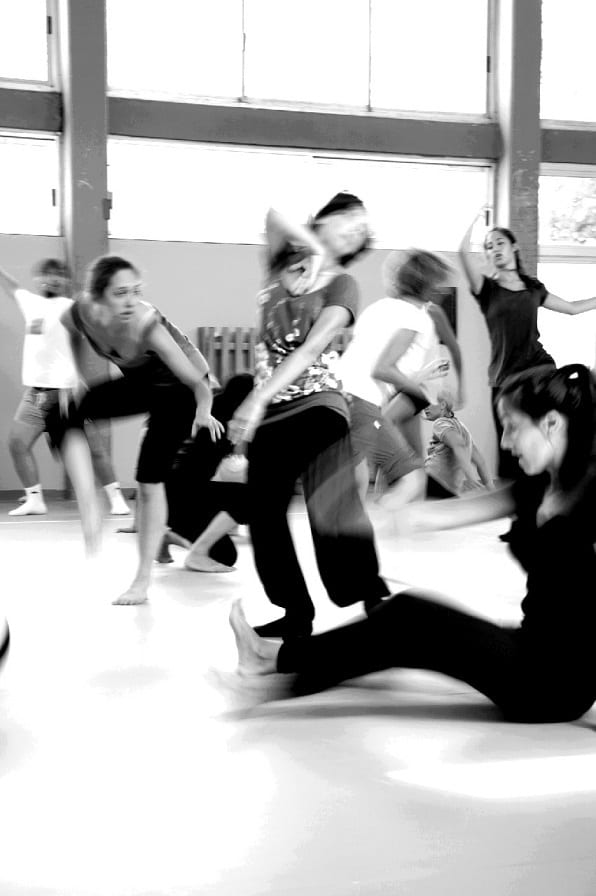Primo giorno per B.Class, la serie di workshop di danza tenuti per B.Motion 2013 dai coreografi e danzatori presenti al festival. Giovedì 22 agosto la lezione, dalle 10 alle 12 alla Palestra Vittorelli, è stata condotta da Chisato Ohno. La coreografa è inoltre a Bassano del Grappa per il workshop pomeridiano (14 > 16) organizzato dalla rete No Limita-C-tions.
Ogni giorno pubblicheremo le immagini della lezione, alcuni commenti dei partecipanti e un’intervista ai coreografi!
Chisato Ohno
Formatasi al Central School of Ballet di Londra, Chisato Ohno ha danzato con Netherlands Dans Theater 2 in lavori di Jiri Kylian, Hans van Manen, Johan Inger e molti altri. Ha lavorato con Batsheva Dance Company prendendo parte alle nuove creazioni della compagnia e agli spettacoli di Ohad Naharin. Ha collaborato con la Karas Company di Saburo Teshigawara per due produzioni e altri spettacoli di repertorio. Vive a Londra e insegna la tecnica Gaga dal 2005.
 |
 |
COMMENTI DEI PARTECIPANTI
Mi è piaciuto molto perché si è indagato il movimento internamente e non solo esternamente. Ho scoperto nuovi modi di lavorare con il mio corpo. Rachele
È stata un’esperienza nuova che ci ha consentito di guardare dentro di noi per capire cosa siamo in grado di fare. Mi è piaciuta molto la lezione. Arianna
Una struttura di lezione diversa da quelle a cui siamo abituate. Nel lavoro non c’è mai un stop brusco o una pausa. È un processo, un’evoluzione del movimento che indaga anche la resistenza. Jessica Elena Alessia
 |
INTERVISTA A CHISATO OHNO: 5 domande alla coreografa che ha condotto la B.Class
In your training or educational path, you met a lot of teachers. Who do you consider your master with the capital “m”, if there is one?
He is definitely Ohad Naharin because of what I teach, which is “Gaga” technique. In general I think that if you would be a dancer, every person you meet is a teacher.
Is there a training experience which impressed you or is particular important for you?
It’s the same. I met Ohad Naharin when I was dancing in Holland in the junior company NDT (Netherlands Dans Theater, ndr) and I was 20 or 21.
His work was very different from what I was doing, especially with improvisation. In what I was doing, the choreographer told the movements and I learned; instead, he really worked with me as a collaborator: a collaboration between the dancer and the choreographer.
He knew how to bring out from each person what they could do. It was very new for me, I didn’t have this possibility before, in a way to do what you want, what you feel as a dancer: it was like “Don’t do what I tell you, but do what you feel”. It was like a transformation: from a dancer to an artist; to become somebody who can give more than just being a very good dancer; in this way you can feel you are contributing to the all piece.
How have you structured your class here in B.Motion?
In B.Motion, I’m working with the Gaga technique: a space for improvisation that uses a lot of imagery. I learned from Naharin the language of how to get people somehow direct, to make something happen in a very direct way, through the words and imagery and how it comes into movement. So it’s how I’m working.
The very good thing with Gaga is that I plan things but I don’t know how it may go, it depends. At B.Motion the class is very mixed: there are different ages, older and younger, and abilities. It is very interesting because you have to find how and what works for who. So in the first day I only saw and met them and today for example I’ve tried to be more specific, to be more connected to individual people. The idea is to help them to find their own movement.
Describe your B.Motion’s class in a sentence.
It involves exploration, it leads to discover and to explore, then you will find new information.
In one sentence I could say: to go beyond what you think you can do.
Is there something that you or people in general have not to do during a dance workshop?
There are two things not to do.
One is to have mirrors – and, for this, the studio in Bassano is very good. All the time you have to be involved and have to experience what you’re doing and so you have not to check how you are by looking in the mirrors!
Number two is that you don’t have to stop. For one hour and fifty minutes you don’t have to stop. Usually in a dance class, when you’re learning an exercise you stop to drink some water, to watch around or whatever… but in this way you lose the flow.
Even when I explain or I talk your movement has to go. To stop is an habit – you stop and you learn –, but I think we can learn together also when I explain; for many people it is not so easy – especially the younger dancers don’t understand it –, but they really don’t need to stop.
*La redazione di b-stage 2013 è composta da Elena Conti, Roberta Ferraresi, Rossella Porcheddu, Carlotta Tringali